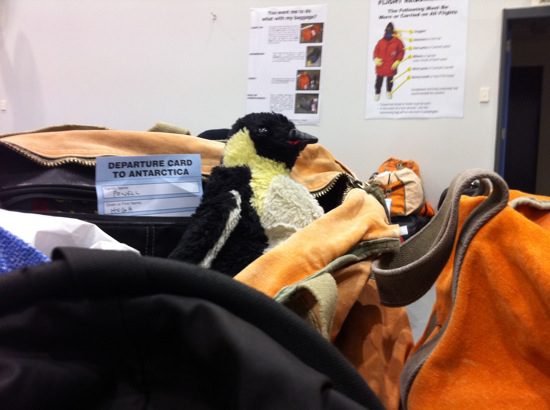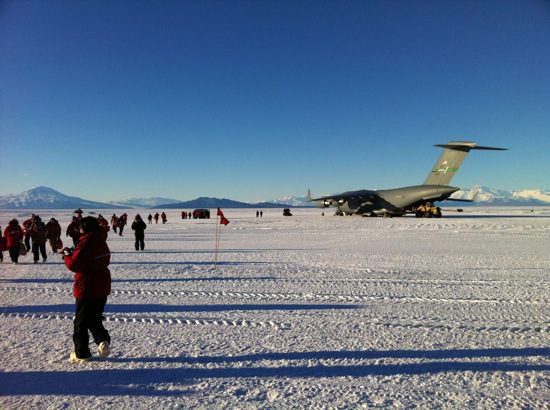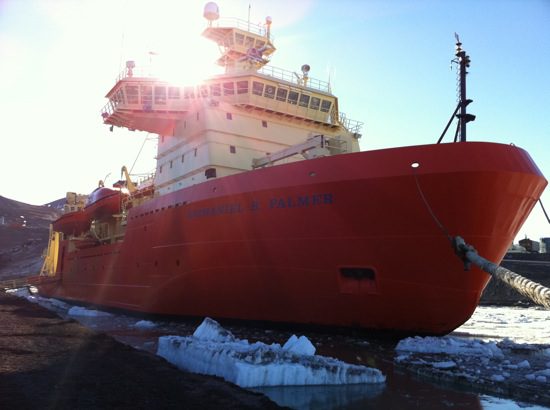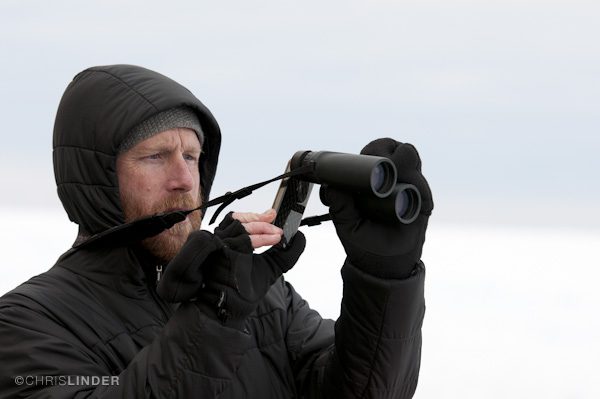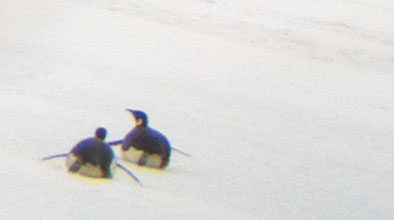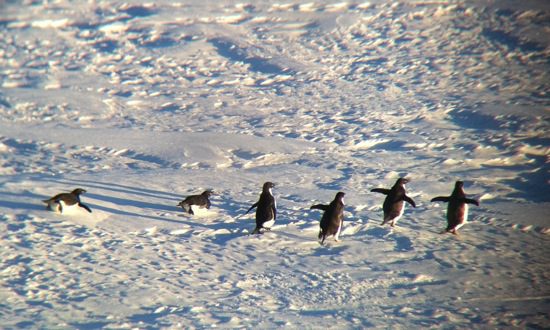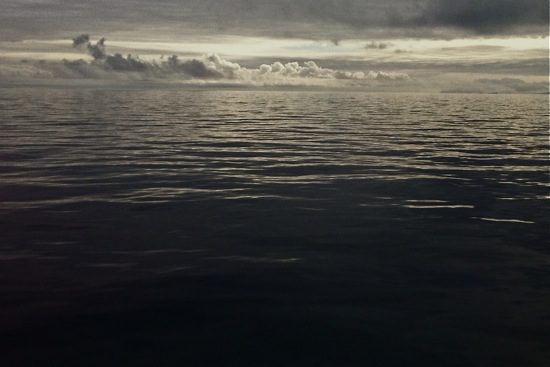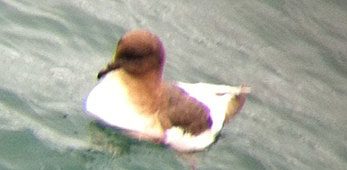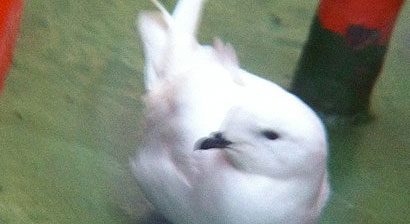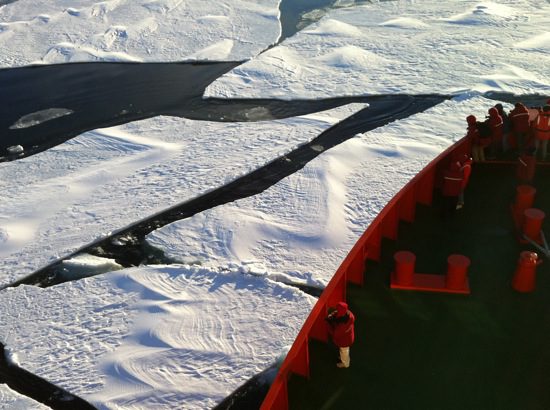Antarctica by iPhone
Text and images by Hugh Powell February 1, 2011
Packing essentials for my flight to McMurdo Station, Antarctica, from Christchurch, New Zealand. 
Our military C-17 landed directly on the sea ice, and suddenly we were in the austere white world of Antarctica. 
We moved directly to the 308-foot icebreaker Nathaniel B. Palmer and set sail the next day. 
We broke through 16 miles of ice on the way to open water. I was up on deck iPhoniscoping penguins. Photo by Chris Linder. 
The nearest Emperor Penguin colony is about 100 miles away by water, but still we saw several groups on the ice. 
Emperors are magnificent, but my favorites are the little Adélies. Such energy and determination packed into their little bodies. 
The ship has traveled 600 sea miles by now and we've been lucky with weather. This is off Cape Adare, usually one of the windiest spots in Antarctica. 
In the slack winds many seabirds rested on the smooth water. The boldly marked Antarctic Petrels are a common companion of ours. 
Snow Petrels are delicate seabirds much smaller than Antarctic Petrels. This one landed briefly on our bow during a calm spell. 
Breaking loose pack in calm water is a contrast of quiet gliding and the sharp crunch of floes cracking and sliding along the hull.
Hello from Antarctica! I’ve been here in the deep, deep south for 11 days, 2,000 miles south of New Zealand. I arrived on a C-17 jet at McMurdo Station, at the southern end of the Ross Sea—near where Captain Robert Falcon Scott launched his ill-fated attempt on the South Pole 100 years ago.
We’re at about 78° south latitude and 167°east longitude here. We’re 18 time zones ahead of the East Coast. We have 24-hour daylight—the sun won’t dip below the horizon until the end of February. And for Antarctica this is the heat of summer, with temperatures often around freezing. From what I hear, we’ve been having better weather than much of the East Coast.
I’m down here as part of an oceanographic research voyage. When we got to McMurdo we quickly boarded a 308-foot icebreaker ship and sailed north toward some of the most productive waters on the planet. The scientists on board are studying how ocean currents fuel the blooms of plankton that feed a couple of million penguins and thousands of whales.
Though our main purpose is not to study birds, I did bring my binoculars with me. I’ve been using them with my iPhone camera to get a few photos (see this featured photographer for advice on digiscoping with a cell phone).
We began seeing penguins almost as soon as we left McMurdo Station and began breaking ice toward open water. Emperors stood calmly with their bills in the air, a bit like monocled Victorians, or dropped to their bellies and slid away, steering with their flippers. The little Adélie Penguins are much more numerous here, and we hear their short yelps from the ice floes as we pass. Far out in open water small groups sit like rafts of auks or swim alongside the ship, leaping seamlessly out of the water at speed, like dolphins. We’re too far south here to see any other penguin species.
As fun as it is to take iPhone photos, they can’t really compete in sharpness with a real camera. Fortunately I’m traveling with a professional photographer named Chris Linder. We’ve worked in Antarctica together once before (and he’s been a featured photographer on All About Birds). He’s been kind enough to let me post a few of his bird photos to the blog. They’re coming soon, so stay tuned! And if you’re interested in how scientists study the small end of the food chain, visit our expedition blog.

All About Birds
is a free resource
Available for everyone,
funded by donors like you
American Kestrel by Blair Dudeck / Macaulay Library
